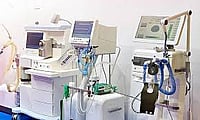A landmark international study has found that hospitals with better nurse staffing and supportive work environments not only improve outcomes for nurses but also significantly reduce physician burnout and job dissatisfaction. The research, published in JAMA Network Open, offers one of the clearest solutions yet to the global crisis of physician burnout.
Led by Penn Nursing’s Center for Health Outcomes and Policy Research (CHOPR), the study surveyed more than 6,400 physicians and 15,000 nurses across the United States and six European nations—Belgium, England, Germany, Ireland, Norway, and Sweden. Hospitals with adequate nurse staffing, stronger work environments, and effective interdisciplinary teamwork showed substantially lower levels of physician burnout, intent to leave, and dissatisfaction.
Experts note that these findings reaffirm a fundamental reality of modern healthcare: nurses are indispensable to the functioning, safety, and resilience of hospitals.
As the backbone of patient care, nurses provide continuous monitoring, manage complex treatments, and act as the first line of defence in emergencies and public health crises. Strong nurse staffing not only improves patient outcomes but also relieves pressure on physicians, reduces medical errors, and enhances overall team performance.
“Physician burnout is a global crisis, but few actionable solutions have been identified,” said Linda H. Aiken, Professor Professor of Nursing and Sociology and Founding Director of CHOPR. “Our study provides evidence that investing in nurses is a ‘two-for-one’ solution—improving both nurse and physician well being while strengthening patient care.”
The study, titled “Informing Hospital Physician Wellbeing Interventions in Europe and the United States: A Cross-sectional Study,” found that even modest improvements in nurse work environments had a measurable impact on physician wellbeing.
In US hospitals, a 10% improvement in the nurse work environment—including better staffing adequacy—was linked to a 22% reduction in physicians’ intent to leave, a 25% drop in physicians unwilling to recommend their hospital, a 19% decline in job dissatisfaction, and a 10% decrease in high burnout.
In European hospitals, a similar 10% increase in nurse staffing adequacy resulted in a 20% lower intent to leave, a 27% reduction in the odds of not recommending the hospital, a 15% decline in job dissatisfaction, and a 12% reduction in high burnout.
Across both regions, hospitals reporting stronger physician–nurse teamwork consistently demonstrated better physician outcomes—highlighting that collaborative, well-supported clinical environments are essential for retaining skilled health workers and ensuring safe, effective care.
The findings arrive at a time when both physicians and nurses are grappling with unprecedented stress and attrition. According to the study, 20–44% of physicians expressed intentions to leave their hospital roles, while up to 45% reported high burnout. For nurses, chronic understaffing and rising workloads have further strained health systems worldwide.
“These findings highlight a path forward that hospital leaders can act on immediately,” said Karen B. Lasater, Jessie M. Scott Term Chair in Nursing and Health Policy and Associate Director at CHOPR. “Improving nurse staffing and creating supportive work environments are feasible, evidence-based reforms capable of retaining both nurses and physicians.”
The study was conducted by the Magnet4Europe Consortium in collaboration with the US Clinician Well-Being Study Consortium, with support from the National Institute of Nursing Research and the EU’s Horizon 2020 programme.


























